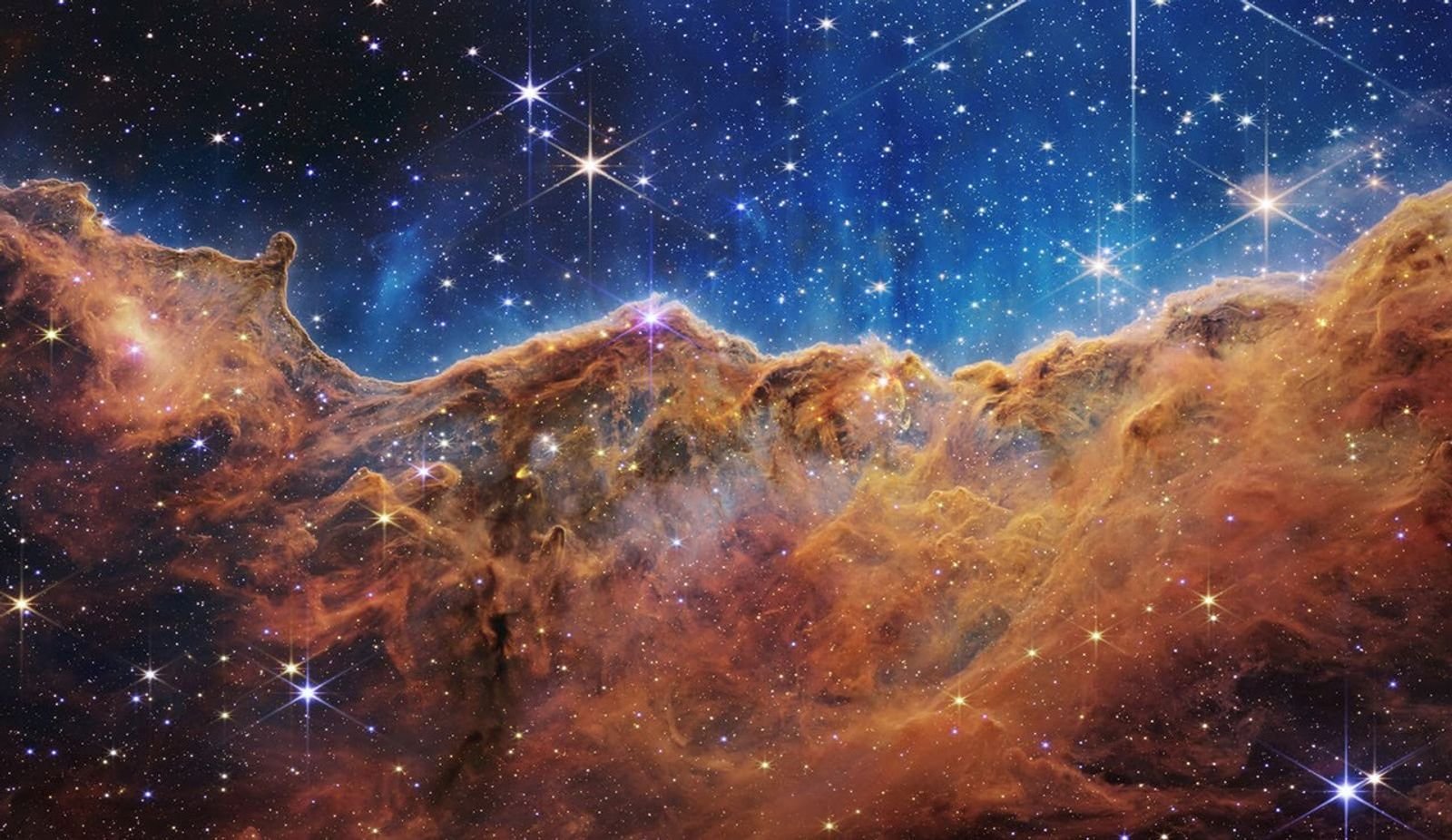
Stars are born within vast, cold clouds of gas and dust known as molecular clouds. These enormous structures can range in mass from 1,000 to as much as 10 million times that of our Sun, stretching across hundreds of light-years.
Because molecular clouds are extremely cold, their gas begins to clump together, forming pockets of higher density. Over time, some of these clumps collide or gather more material, increasing their mass and strengthening their gravitational pull. Eventually, gravity wins, pulling the clump inward. As the material collapses, friction generates heat—giving rise to a protostar, the earliest stage of a star’s life.
Often, stars do not form in isolation. Instead, they are born in groups, creating what astronomers call stellar clusters. When a molecular cloud contains many of these clusters, it becomes a true stellar nursery—a region where star formation is actively underway.
One such nursery is NGC 3324, located at the northwest edge of the Carina Nebula. In breathtaking images captured by the James Webb Space Telescope, the nursery’s edge appears like a landscape of “mountains” and “valleys” sculpted by cosmic forces. In reality, these shapes are towering walls of gas and dust, lit up by the newborn stars within.
These stellar nurseries remind us that even the mightiest stars in the universe begin life quietly, hidden within cold clouds, before blazing into brilliance and shaping the galaxies around them.
